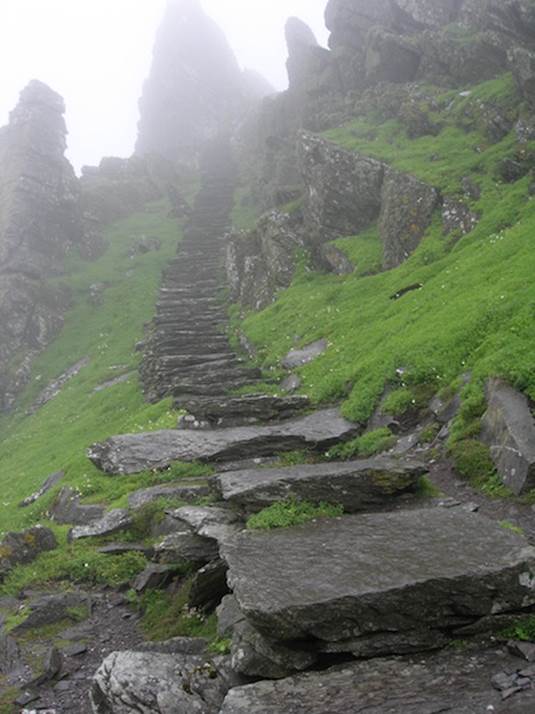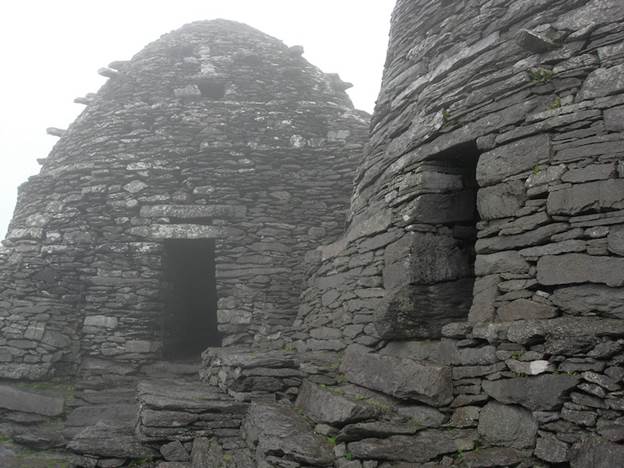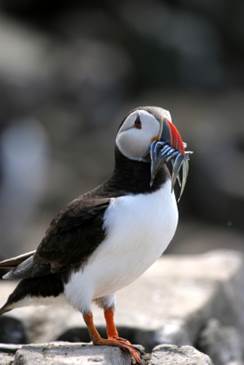Also known as the common puffin the Atlantic puffin ranges from Main to the British Isles and north to Norway and Newfoundland. It breeds in Iceland, Norway, Greenland, south to Maine and on numerous Atlantic islands. Puffins are in the Alcidae, or auk family, that includes guillemots, auks, murrelets, auklets, puffins, and the razorbill.
The Atlantic puffin is the only species of the genus Fratercula that occurs in the Atlantic while here in the NE Pacific we have two species of puffin, the tufted puffin (F. cirrhata) and the horned puffin (F. corniculata). The horned puffin is the closest relative to the Atlantic puffin. The Atlantic puffin is a short, stocky looking bird with a thick neck and short wings and tail. It is about 12 inches long with a wingspan up to 25 inches. When standing it is about 20 inches high. Males are slightly larger than females but they have similar coloration. In their breeding plumage they are quite striking with a glossy black crown, nape (back of head), back, wings and tail. This is in sharp contrast to the roundish white-to-gray patches on the side of their heads, which taper to just about meet behind their head.
The belly and underwings of the bird are white. The eye has a triangular look because of the peaked area of horny blue-gray skin above it and a rectangular patch below it. The orange feet are webbed with black nails. From the side the beak is very broad but from above it is narrow. The front half of the beak is an orange-red and the back half is gray. The bright orange bill plates and other facial features develop in the spring prior to the breeding season and then lost in the winter plumage. Because the bird spends the winter out on the open ocean this is not often observed by humans.

Fratercula – from the Latin fratercula – friar, which is a reference to the black/white plumage resembling monastic robes and arctica from the Greek arktos – the bear, referring to the northerly constellation the Great Bear and the northern distribution of this species.
The name puffin (puffy or swollen) was used to describe the fatty and salted meat of young birds of a different species, the Manx shearwater (Puffinus puffinus) and applied to the puffin later, possibly because of their similar nesting habits.Puffins spend most of their life at sea in a solitary existence, bobbing around the ocean. Their dark upper side helps to camouflage them from avian predators against the dark background of the sea as does their lighter underside from predators beneath them, matching the light of the water surface when looking up at it.
The Atlantic puffin diet is primarily fish, with occasional takes of shrimp, other crustaceans, mollusks and polychaete worms in coastal waters. Diving under water the puffin beats its wings to swim and catch prey. It has a muscular and grooved tongue that allows it hold onto fish in its beak while continuing to catch others. As with many birds that spend most of their time at sea the puffin has salt glands in its nostrils to extrude excess salt. Breeding pairs typically return to the same burrow or if newly paired take over an old one or dig a new one. Early arrivals to the breeding sites take the best spots on grassy slopes above a cliff face for easy take-off. The puffin is not the most elegant flyer and often appears to be struggling mightily to keep in the air, beating their small wings rapidly. Lifting off from the water necessitates running along the surface and flapping strongly. Besides maintaining the burrow puffins bond by billing – where the pair approach each other, wagging their heads side to side, and then rattling their beaks together.
Puffins mate for life and become sexually mature at four or five years of age. Males spend most of their time guarding and maintaining the nest and the female leads incubation and feeding. One egg is laid that hatches in 39-45 days. Young take 34-50 days to fledge, or longer depending on fish abundance. Puffins are thought to live up to 20 years in the wild.
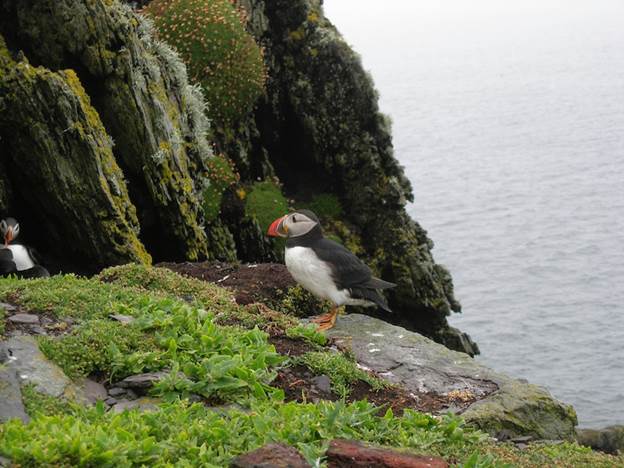
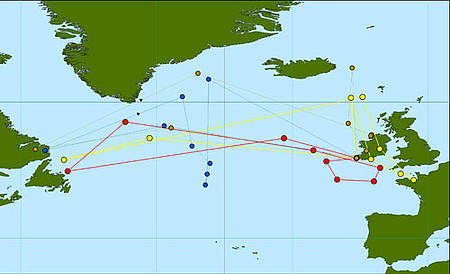
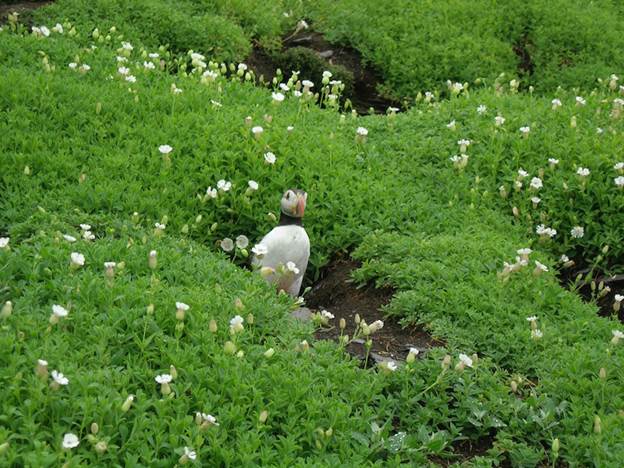
While wandering back down these steep, Hobbit-like steps in the mist, I was paying more attention to the birds on the way down and tweaked my knee – it could have been worse!! As the saying goes if you fell and didn’t die you might wish that you had.
